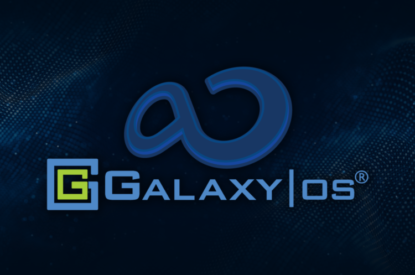Pulse
Gaming and Esports: The Next Generation
By Lewis - 14 December 2020
In October, YouGov launched its first whitepaper on esports and gaming entitled Gaming and Esports: The Next Generation. The report provides analysis of the global video games and esports landscape across 24 countries and how it has changed since the COVID outbreak.
G3 discusses the report’s findings with Nicole Pike, Global Sector Head of Esports & Gaming at YouGov. Nicole explains why there is more interest in the vertical than ever before and why 2020’s proliferation of new event formats, titles and platforms still has many potential sponsors confused and holding back their investments.
What was the rationale behind commissioning the whitepaper? Why now?
The impact of COVID-19 has put a renewed spotlight on the gaming and esports industry, with many around the world turning to gaming-related content during the pandemic. As such, there are more people playing games globally than ever before, and in turn more interest in the industry as a way to engage with and reach consumers.
At the same time, I joined YouGov just a few months ago, with the remit of building our data and solutions surrounding the sector. With this whitepaper, we are establishing YouGov as a serious and valuable data source for esports and gaming around the world.
What are the report’s main findings?
The paper contains tons of content and valuable insights, but to boil it down, I’d say there are four key themes that permeate the narrative. One is the aforementioned COVID-19 impact, and how it has made gaming a bigger part of not just consumers’ lives, but also businesses around the world.
We believe that trend will continue, especially when combined with the next key finding, which is the success Sony and Microsoft are poised for with the recent release of their new gaming consoles. While the consoles share a number of similarities, the two brands are looking at the future of their independent gaming ecosystems in very different ways.
Third, we spend a good amount of time detailing the nuances across different contingencies of the gaming space, as they are in turn very different groups of consumers. Understanding the underpinnings of these groups is crucial to effectively marketing to them.
Finally, we find that esports fans’ high engagement levels make them more attuned to marketing messages and especially sponsorship activations than the typical sport fan – an opportunity, but also a potential trap for marketers who don’t approach the space thoughtfully.
Across the 24 countries examined in the report, what markets show the highest esports engagement?
In terms of the overall share of the gaming population engaging with esports in some way, China leads the charge here, followed by several markets in the Southeast Asia region. Interestingly, Western countries – which are highly involved in leading the global business side of esports – have a relatively lower share of esports engagement; but as we know, this is quickly on the rise.
Does awareness necessarily correspond to engagement?
Interestingly, it does not – we see markets where awareness of esports among gamers is relatively low, but those who are aware are highly likely to be engaged – this is the case in several Middle Eastern markets, for example. And then conversely, esports is well-known but not necessarily well-followed as well – countries in the Nordics fall in this category.
With not every game title or genre being fit for esports, the types of games and platforms people play in each market is often a large determining – and differentiating – factor for levels of esports engagement.
How has esports evolved during 2020 with regards to new event formats, titles and platforms?
We’ve seen evolution across all three of these – in part driven by COVID, though not entirely. COVID’s main impact has been shifting esports leagues and tournaments to online formats. Of course, this is something esports is used to, but for larger events that rely on in-person engagement and entertainment as part of the fan experience, it’s been a substantial pivot vs. plans.
The shift to online events, though, has opened the ecosystem up to small- and mid-tier organisers who have the ability to execute high quality experiences; and we’ve seen the same type of opportunity presented to streamers with smaller audiences during this time, too.
In terms of titles, Riot Games’ VALORANT made a major entrance onto the scene mid-year and has been leveraging organisations around the globe to build its tournament scene. Activision’s Call of Duty: Warzone, a battle royale version of the ever-popular franchise, has also emerged as an online tournament fan favourite this year.
Another BR that was a massive hit with streamers this summer was Fall Guys, though we haven’t seen a structured esports scene develop around this yet. In the same genre, Garena Free Fire was not newly launched this year, but we’ve seen its success rising globally as mobile esports become a more established format worldwide.
Despite video game competitions not being a new phenomenon, is the complexity of the esports landscape underestimated? Are esports sponsors and rights holders under-informed about who their properties, streams and activations are reaching?
Complex is a great word to use in this case – and I’d probably also add confusing to that. From a brand or sponsor’s standpoint, many experience “decision paralysis” when it comes to esports; as an industry, we’ve always referred to just ‘esports’ – but the reality is that every title and event circuit is its own mini-ecosystem, and not every opportunity is going to be the right fit for every brand. Once brands start to peek under the surface, they can become pretty overwhelmed with everything.
The reason I began pursuing measurement and insights in esports several years ago is that I saw how big of a positive impact it could have on the growth and sustainability of the industry, if done in the right way. Vanity metrics were creating short term gains, but at the expense of long-term failures and disappointment among investors.
Things like accurately sizing who esports programming reaches, how large fan bases are, and where around the world they are located are complicated in the space – and as an industry, we’re still working to untangle many of these. But I’m optimistic that as we do, brands will have the clarity they need to jump into the space headfirst.
How are sponsorships evolving in esports? Which are the more successful partnerships between leagues, teams and players?
Esports sponsorship has always had a component of non-match day content, but we’re just seeing the amount, quality, and value of content continue to skyrocket. Especially during COVID when events were cancelled, delayed, or significantly changed from a format perspective, esports organisations really took advantage of the captive audience they had to create more interactive content experiences for fans.
We’re also seeing a lot more collaborative projects coming out of the esports space. For example, Riot Games and Spotify formed a partnership that included a Spotify hub for all things LoL audio, and podcasts series related to the title. Esports team organisation Fnatic and Gucci collaborated to launch a Fnatic-inspired watch as their initial project together under a new sponsorship deal; fashion has been a huge trend in esports this year.
In terms of success, this is so much more a function of how aligned the rights holder and brand are with each other and what fans want vs. a formula of which assets and categories exhibit the most success. An overarching objective of esports sponsorship should be that it offers fans a compelling reason to exist and tangible benefit to their gaming and/or viewing experience – all successful partnerships will check these two boxes, at minimum.
What advice would you give potential advertisers and sponsors considering if, when and how to spend wisely in the esports market?
Don’t consider esports in a vacuum. One side of this is looking at esports as part of the broader gaming ecosystem and considering who you want to reach with your esports strategy. Chances are, this could be complemented or in some cases even better executed by activation in broader gaming as well. I encourage brands to approach their gaming strategy cohesively in order to maximise its effectiveness.
The other side of this is considering how gaming/esports fit with the rest of your sponsorship or advertising portfolio. Are the goals same, or different? Are you setting realistic expectations for your esports spend vs. what you would expect for the same investment in other sports or entertainment properties? What are you trading off by spending in esports, and do you have a plan to measure the impact of this post-activation? All of these are crucial to approach esports in the right way, from the start.
What key trends will drive continued growth for esports and gaming in 2021?
Over the next several months, all eyes will be on the new Xbox and PlayStation consoles – which according to our data so far, are in high demand with no end in sight. These will be keeping gamers engaged and likely absorbing much of their leisure spend just as many countries are unfortunately going back into quarantine due to COVID.
I also expect to see more crossover activity between esports, sports, and lifestyle brands moving forward. We’ve seen a huge influx of this in the second half of 2020 – including just this month with Dele Ali from Tottenham Hotspur becoming a global ambassador for the UK-based team, EXCEL ESPORTS.
Esports teams continue to seek cultural relevance outside of just gaming competitions, and sports organisations are looking to better engage younger consumers. Lifestyle-based influencer collaborations are proving to be an effective way to connect these two need states, and to me are more authentic and reasonable than expecting esports fans to suddenly become sports fans, and vice versa.
Nicole is one of the esports & gaming sector’s most-respected experts, boasting over 13 years of experience in consulting, custom research, sales forecasting, brand tracking, and sponsorship measurement in the space. She has built her career collaborating with major players in the industry to build meaningful data streams and insights and shaping industry standards for measurement of esports.
In a role specially created for her at YouGov, Nicole is designing the future of the company’s analytics in the esports and gaming sectors, building on what are already some of the industry’s deepest and most sophisticated research tools.



